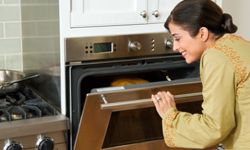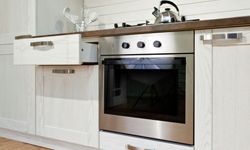Key Takeaways
- Convection cooking uses a fan to circulate hot air, allowing for faster and more even cooking, saving time and energy.
- This feature reduces the hassle associated with adjusting oven racks, as the even heat distribution minimizes the importance of rack placement.
- Convection ovens prevent the common issue of uneven cooking and potential burns from adjusting racks.
You don't have to be a gourmet cook to want a new oven with the latest features and amenities. Let's admit it: Many of us watch cooking shows just for the entertainment value. Whether or not you actually make that cornbread and flatiron steak roulade is secondary. The idea is that if you wanted to -- say, around the holidays or for poker night or Valentine's Day -- you could conquer any recipe (and take no prisoners) if you had the right tools. Nothing says: "I plan on becoming a cook to be reckoned with!" better than a slick range and oven setup.
Let's take a look at five features to look for when buying an oven. A couple of these are old favorites, while a few may surprise you. The world of competitive cooking has had a big impact on the number of gourmet features available to the work-a-day oven-meister. After looking at this list, you may just decide to run out and buy a new range whether you really need one or not.
Advertisement

